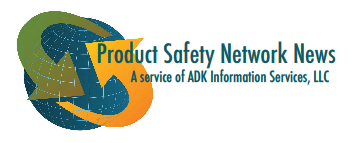Lumber Liquidators Holdings Inc. to pay $13.2 Million in fines to settle DoJ probe
February 1, 2016, Reuters
The fines resolve a U.S. Department of Justice investigation into the import of certain flooring products in 2013. The company also agreed to an organizational probation of 5 years, implementation of a strict environmental compliance plan, and independent audits. The charges were linked to the “use of timber that was illegally logged in Far East Russia,” as well as false statements on Lacey Act declarations which obfuscated the true species and source of the timber.
Report: Lumber Liquidators flooring has low cancer risks, can trigger breathing problems
February 11, 2016, Tribune News Service
The national retailer sold Chinese-made flooring that emits hazardous levels of formaldehyde, a federal investigation found. The CPSC oversaw the testing of the product, which the report says “found the flooring gave off enough formaldehyde gas to irritate the eyes, nose and throats of many people” as well as triggering breathing problems in people with certain health conditions like asthma. The report concludes that the formaldehyde also increased cancer risks by a small amount.
Hot toy has hidden dangers
February 11, 2016, wapt.com
A $1 million mansion burned down in Nashville recently after firefighters said a hoverboard sparked a fire that spread so quickly that a teenage girl narrowly escaped. Experts have said that lithium-ion batteries inside the boards can overheat and burst into flames. Across the country, 40 fires like the one in Nashville have been investigated.
2016 Emerging issues in the children’s product industry
February 9, 2016, Lexology
Anticipating issues that will impact the children products industry, 3 regulatory attorneys suggest trends that are likely to occur this year. Among these trends are TSCA (Toxic Substances Control Act) and the regulation of chemicals, Consumer Product Safety Improvement Act Section 104 Notices of Proposed Rulemaking, recall effectiveness, crib bumpers, and importing consumer products.
Public health researchers map world’s ‘chemical landscape’
February 12, 2016, medicalexpress.com
Researchers from the Johns Hopkins Bloomberg School of Public Health have created a map of the world’s chemical landscape. The map serves as a catalogue of 10,000 chemicals for which there is available safety data that they say can predict the toxicity of many of the 90,000 or more other substances in consumer products for which there is no such information. It was designed to help regulators, manufacturers and scientists get a good idea about whether chemicals for which there is little research are harmful or not.
Chipotle meeting outlines food safety to workers and message for public
February 9, 2016, The New York Times
The Chipotle Mexican Grill chain closed more than 2,000 restaurants for four hours to hold a “virtual” town hall meeting with its employees about steps it said it was taking to improve food safety and regain consumer’s trust. Chipotle has experienced six food safety failures involving norovirus, salmonella, and E. Coli since July, with 500 customers reporting illness. The company announced a $10 million program to help small farmer suppliers with new requirements for more testing.
The solution to drone safety is to empower the smallest ones
February 9, 2016, The Hill Blog
A spokesman for a consumer drone company posts a blog endorsing legislation introduced by an Oregon Congressman to regulate the products by operational purpose, rather than operational safety. He notes that search-and-rescue missions are a life-saving purpose that can be enhanced by empowering the smallest class of drones through a “micro” drone regulatory category in 2016.
Managing data and the supply chain from soup to nuts
September 9, 2016, Infoworld
Campbell Soup, the food manufacturing giant behind such brands as Pepperidge Farms, Prego, and V8 made national headlines and praise when it announced intentions to become the first major food company to start disclosing GMO (genetically modified organisms) ingredients in its products. There’s “no question” that it will mean major technology and labeling changes for a very complex supply chain, says an industry software provider.
Researchers probe power of nanotech
February 11, 2016, mndaily.com
A research collaboration between the Universities of Minnesota and Wisconsin-Madison has been studying the effects of an additive used in electric car batteries. Their goal is to improve the nanocompoumds added to lithium-ion batteries like those used in cell phones, computers, and more recently, electric cars.
FDA seeks $5.1 billion total for FY 2017, including funds to implement food safety law, improve medical product safety and quality
February 9, 2016 fda.gov
The U.S. Food and Drug Administration is requesting an 8% increase over the enacted budget of 2016. The overall request includes a net increase of $14.6 million in budget authority and $268.7 million in user fees for initiatives tied to several key areas, including the implementation of the FDA Food Safety Modernization Act, and efforts to improve medical product safety and quality.


